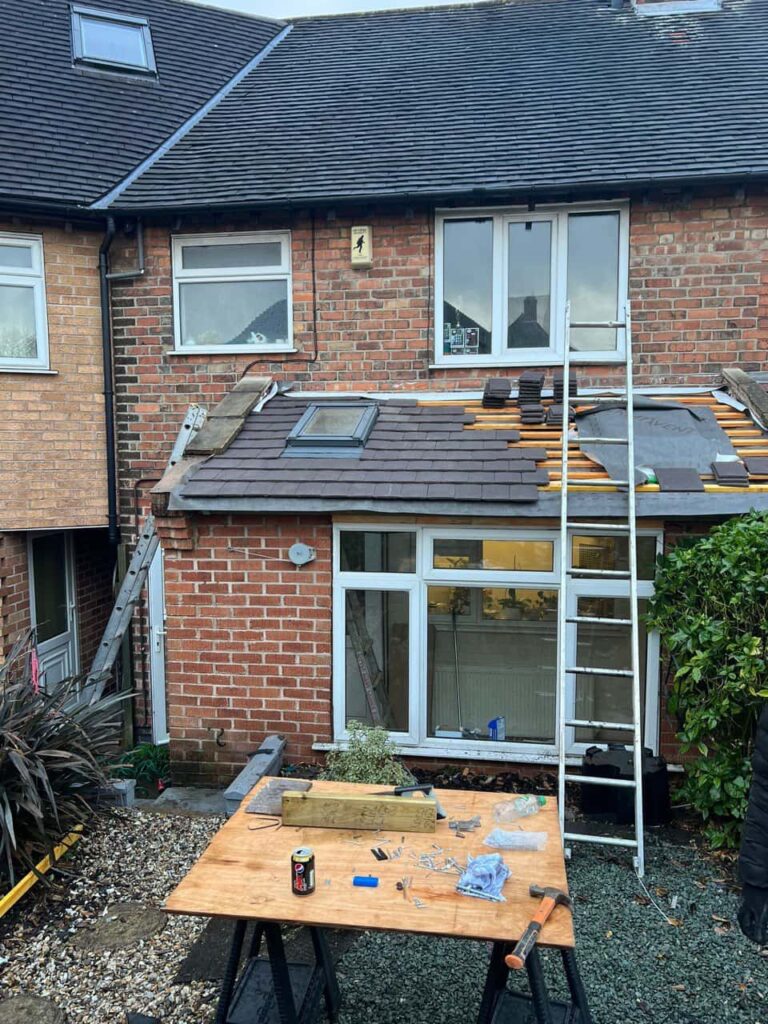Introduction: As urban spaces become denser and green areas scarce, property owners increasingly turn to innovative solutions to incorporate nature into their surroundings. One such solution is the integration of roof gardens and green spaces on flat roofs. In this blog post, presented by Clay Cross Roofing Repairs, we’ll explore the benefits and considerations of incorporating roof gardens and green spaces, transforming flat roofs into vibrant and sustainable urban oases.
Benefits of Roof Gardens and Green Spaces:
- Environmental Benefits: Roof gardens and green spaces help mitigate the urban heat island effect by reducing heat absorption and reflecting sunlight. They also improve air quality by capturing pollutants and releasing oxygen, creating a healthier and more sustainable urban environment.
- Stormwater Management: Green roofs absorb and retain rainwater, reducing stormwater runoff and alleviating pressure on urban drainage systems. This helps prevent flooding and erosion while replenishing groundwater reserves and promoting biodiversity.
- Energy Efficiency: Roof gardens provide natural insulation, reducing heat transfer and energy consumption for heating and cooling. They also extend the lifespan of roofing materials by shielding them from UV radiation and temperature fluctuations, resulting in lower maintenance costs and improved energy efficiency.
- Aesthetic Appeal: Roof gardens and green spaces enhance the visual appeal of buildings and contribute to a sense of well-being for occupants. They create relaxation, recreation, and social interaction opportunities, fostering a stronger sense of community and connection with nature.
- Increased Property Value: Properties with roof gardens and green spaces command higher market value and rental income, attracting eco-conscious buyers and tenants who value sustainability and quality-of-life amenities.
Considerations for Implementation:
- Structural Integrity: Before installing a roof garden, it’s essential to assess the structural capacity of the existing roof to support the additional weight of soil, plants, and amenities. Structural reinforcement may be necessary to ensure safety and stability.
- Waterproofing: Proper waterproofing is critical to prevent water infiltration and protect the underlying roofing membrane from damage. Waterproof membranes, drainage systems, and root barriers should be installed to ensure long-term durability and performance.
- Plant Selection: Choose plants well-suited to the local climate, soil conditions, and sun exposure of the rooftop environment. Drought-tolerant, low-maintenance plants are ideal for roof gardens, requiring minimal watering and upkeep.
- Maintenance Requirements: Roof gardens and green spaces require regular maintenance, including watering, fertilising, pruning, and pest control. Establish a maintenance plan and budget to ensure the ongoing health and vitality of the rooftop ecosystem.
- Safety Considerations: Implement safety measures such as guardrails, handrails, and non-slip surfaces to prevent accidents and injuries. Access to the roof should be restricted to authorised personnel only, with proper signage and warning devices in place.
Conclusion: Incorporating roof gardens and green spaces on flat roofs offers numerous benefits for property owners, occupants, and the environment. By transforming underutilised rooftop areas into lush and sustainable landscapes, we can enhance urban livability, promote ecological resilience, and create healthier and more vibrant communities.
Call us on:01246 956 398
Click here to find out more about Clay Cross Roofing Repairs
Click here to complete our contact form and see how we can help with your roofing needs.

